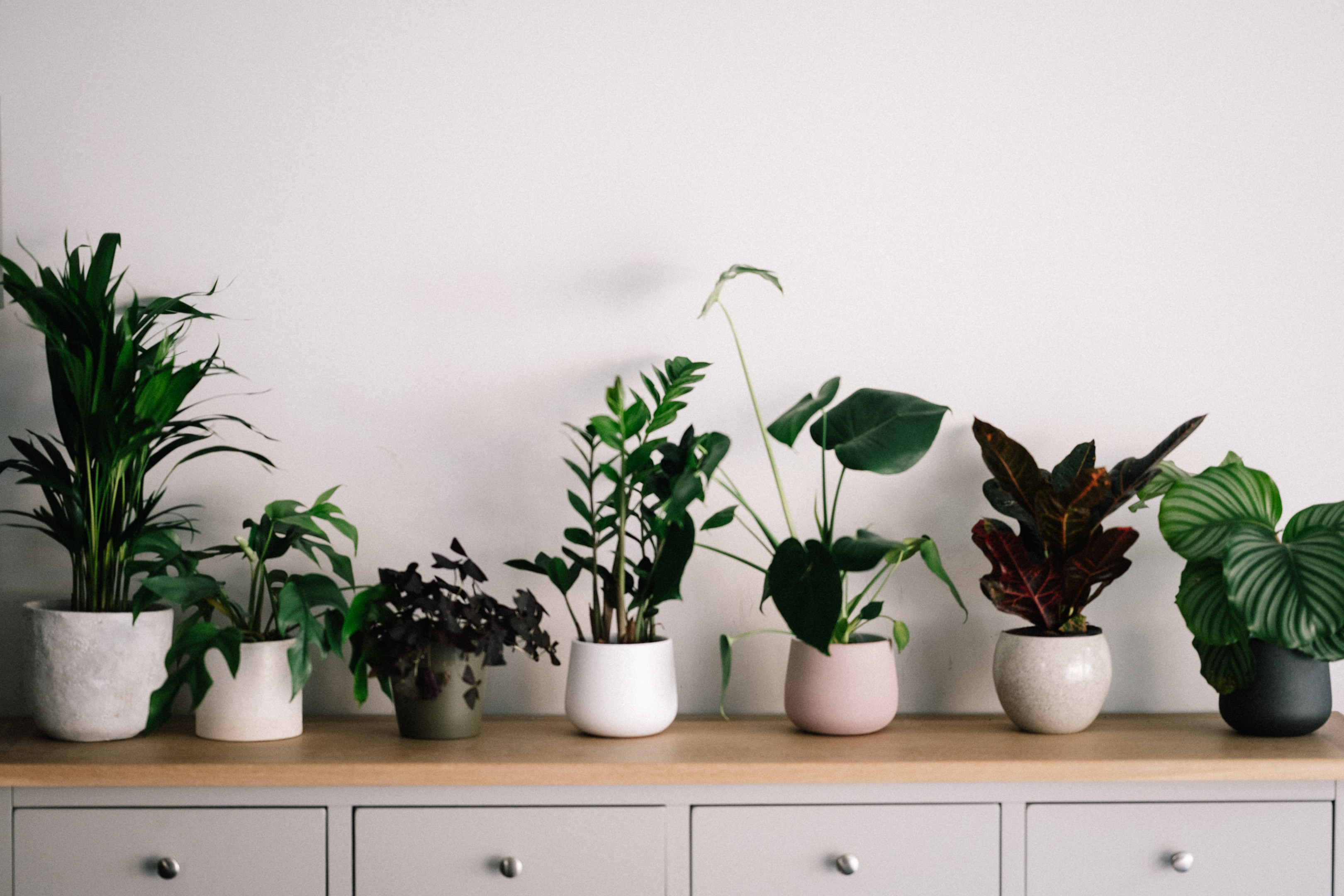For many people, the air quality in their homes can cause concern. Indoor air pollution is among the most important environmental risks to our health and well-being. But fortunately, plants are here to rescue us. Introducing some of the most effective plants to improve indoor air quality lets you breathe easy and enjoy a healthier home.
Let’s explore the 10 best plants for indoor air quality improvement. From their air-purifying capabilities to their decorative appeal, these plants will be a welcome addition to any home.
Safety Concerns Before Buying A Plant
When choosing the right plants to improve air quality, several factors should be considered. They include:
- Pet-Friendliness: Many air-purifying plants can be toxic to cats and dogs. It is important to research pet-safe and allergy-safe options before bringing these plants into your home. The ASPCA is a valuable resource for identifying plants that could be hazardous to pets.
- Humidity Control: Increasing the number of indoor plants may increase humidity, which could lead to mold growth. To prevent this, let the excess water drain into a pan or tray, remove the excess water regularly, and use sub-irrigation planters. Covering the top of the soil with Spanish moss or aquarium gravel can also help to reduce mold spores.
- Size Matters: Consider the size of each plant at its full maturity. Plants can quickly become large and bulky, so choose options that will fit comfortably in your space.
- Light Requirements: Different plants require different lighting conditions — some thrive in indirect sunlight, while others need direct sunlight. Researching the necessary light requirements for various plant species can help you choose your space.
- Allergens: Different plants can contain allergens that might trigger asthma or allergies. To minimize this risk, consider consulting with an allergist before purchasing any indoor air-purifying plant.
10 Best Plants For Indoor Air Pollution Abatement
Adding some greenery in the form of houseplants is an excellent way to improve your indoor air quality to make your home a healthier and cleaner place to live. Houseplants are beautiful to look at—they can help filter out toxins such as carbon dioxide, formaldehyde, and benzene from the air. Here are some of the best:
1. Spider Plants
Known for their ability to remove formaldehyde, carbon monoxide, and xylene from the air, Spider plants are one of the best plants for indoor air quality improvement. The small size makes them perfect for any indoor space, whether an office or home.
With over 200 varieties, Spider plants can survive even if we aren’t the best at remembering to care for them. For those with children or pets prone to playing with things they shouldn’t, these plants are non-toxic and safe. Water two to three times a week, and your spider plant will thrive. Also, they can be propagated – so you can get multiple plants from just one!
2. Peace Lilies
Peace lilies are a beautiful addition to any home, with their dark green leaves and white blossoms. But beyond its beauty, the peace lily is also great at filtering benzene, xylene, ammonia, and trichloroethylene from our air. It is a great choice for bedrooms and other low-light areas, as it thrives in indirect light. This plant also releases more oxygen at night, so it’s a great addition to any bedroom. Avoid overwatering your peace lily, as too much water can cause root rot.
The soil for this plant should remain slightly damp. Provide as much light to the peace lily as possible for the best blooming results. However, due to its toxicity when ingested, it is not safe for cats, dogs, and children; if handled incorrectly by adults, burning, swelling, and skin irritation may occur. Thus this species is better kept as a decorative element, not consumed.
Also, Peace lilies are sensitive to fluoride, so they should not be placed in bathrooms or kitchens. Avoid using tap water at all times and instead opt for distilled or filtered water when watering this plant. Consider adding a few peace lilies to your home for a true air-purifying superpower.
3. Dracaenas
For novice plant lovers, Dracaenas are a perfect choice. This diverse range of houseplants comes in various shapes, sizes, and colors – from the tall corn plant, with its unique patterning, to the vibrant purple rainbow plant. Create some greenery inside your home with these air-purifying beauties.
For caring for your dracaenas, keep their soil damp enough but never soggy. Over-watering can be a death sentence for these plants. Keep them away from curious pets because ingesting these plants can cause vomiting, excessive salivation, and dilated pupils in cats or dogs.
Dracaenas are great air purifiers that eliminate formaldehyde, xylene, toluene, benzene, and trichloroethylene. You’ll not only be decorating your home with this stunning houseplant, but you’ll also be helping to clean and purify the air in your living space.
![]()
4. Golden Pothos
Known as Devil’s Ivy, this resilient plant can handle various growing conditions and reach heights up to 8 feet. Considered one of the most effective indoor air purifiers, it can easily remove common toxins. To care for it properly, clean when the soil is dry and trim the tendrils if it gets too big. Be careful around cats and dogs, as this plant is toxic to animals.
Also, it eliminates formaldehyde, xylene, toluene, benzene, and carbon monoxide from the air. It is a great ornamental piece that provides extra air filtration for your home. The glossy green leaves make it a beautiful addition to any room.
5. Aloe Vera
Aloe vera has many uses and benefits but is also great at purifying the air. The aloe plant helps filter out formaldehyde from our environment, which can be found in furniture, cleaning, and paper products. Not only is aloe vera great at purifying the air, but it also releases oxygen into the atmosphere, which helps to reduce stress levels.
It’s a hardy plant requiring little attention, so it’s great for even novice indoor gardeners. Also, aloe vera is known for its healing properties, so it’s a great plant in the home.
You can place an aloe vera plant on a windowsill or table in any room of your house to help purify the air and add some green beauty to your home. Plus, you can use the gel from the aloe vera leaves as a natural remedy for burns or cuts.
It’s a win-win! Aloe vera is perfect for anyone looking to bring air-purifying benefits and greenery into their home.
6. Snake Plant
Known as Mother-in-Law’s Tongue, this yellow-tipped succulent is one of the best plants for improving indoor air quality. It releases oxygen at night, allowing you to breathe easier while sleeping. Also, this plant will ensure a healthier home by filtering out formaldehyde, xylene, benzene, toluene, and trichloroethylene.
Overwatering can lead to root rot, so keep it in a well-draining pot with soil that is allowed to dry before being watered again. Also, place this plant in an area where it will receive medium or indirect light for optimal growth.
The Snake plant is a great option for those who want to add some greenery to their home but are short on time. It can survive long periods without water and won’t need much attention or care.
7. Rubber Plants
Being one of the most attractive houseplants, rubber plants are also very low-maintenance. A study conducted by NASA even puts it among the best indoor plants for improving air quality. Make your desk or windowsill more lively with a rubber plant.
Remember that while these plants are easy to care for, they’re toxic to cats and dogs. Make sure to keep your rubber plant away from any pets at home. Also, please give it a bright, indirect light and let the soil dry out between waterings. It will add a touch of vibrancy to your room and has proven benefits in improving indoor air quality. Add one to your home today, and you won’t regret it!
8. English Ivy
For a pop of color, this evergreen climbing plant is an excellent choice for improving indoor air quality. Different varieties may require different amounts of light, from bright and indirect to low-light spaces. Hang it in a basket or let it climb around your windowsill and watch as the vibrant green leaves bring life into any room.
Be sure to water generously during growth, but avoid overwatering during winter. It’s important to note that ingested English ivy can harm humans and animals. It is also known to cause skin irritation in those with sensitive skin from the chemicals found in its sap.
Despite this drawback, English ivy remains a great choice for eliminating benzene, carbon monoxide, formaldehyde, trichloroethylene, and more. You’ll love the natural beauty it adds to any room while reaping the air-purifying benefits.

9. Chinese Evergreen
Being native to tropical forests in Asia, these evergreen perennials look attractive and colorful. They can also eliminate benzene, carbon monoxide, formaldehyde, trichloroethylene, and more toxins.
Caring for them does require extra attention, though – water moderately and allow the compost to almost dry out before watering. Regular misting and repotting every few years are beneficial as they prefer high humidity. However, be aware that plants like dogs could be toxic to animals.
You’ll love any room’s bright and cheery hues, especially with other foliage. Chinese evergreen is a great option to improve air quality while adding a touch of style to your home.
10. Bamboo Palm
The Bamboo Palm is a great addition to any living space with its elegant arching leaves and an affinity for low light. Not only does it look beautiful, but it’s also renowned for removing formaldehyde from the air. When caring for your plant, water regularly during its growing season, waiting until the top layer of soil is slightly dry before re-watering.
Also, keep the Bamboo Palm away from areas with cold drafts. With just a bit of TLC, it will thrive and make your air quality much healthier!
FAQs
1. Are Indoor Plants As Good As Air Purifiers?
Comparing indoor plants to air purifiers is a tricky subject. While plants are natural and effective at releasing oxygen, they do not filter the air of pollutants as an air purifier can. However, in addition to providing fresh oxygen to the home environment, plants also help reduce toxins from household items like furniture and carpets.
2. How Many Houseplants Do I Need?
The amount of houseplants you need depends on the size of your home and how polluted it is. Generally speaking, one plant per 100 square feet should be sufficient to help improve air quality. But if your home is more polluted, you may want to add more plants.
3. How Often Should I Water My Plants?
The watering frequency depends on the plant type and how much light it gets. Most indoor plants will need water once a week, but it’s best to check the instructions for your specific plants.
Conclusion
The best air-purifying plants listed above are the finest for indoor air quality improvement. Not only do they remove toxins, but they also add a touch of nature to your home or office. The best part is that many plants are easy to care for and require minimal maintenance.
Consider pet safety if you have an animal companion, as some indoor plants are toxic to pets. If you’re looking for a natural way to improve the air quality in your indoor spaces, then introducing any of the above plants into your home or office may be just what you need.


